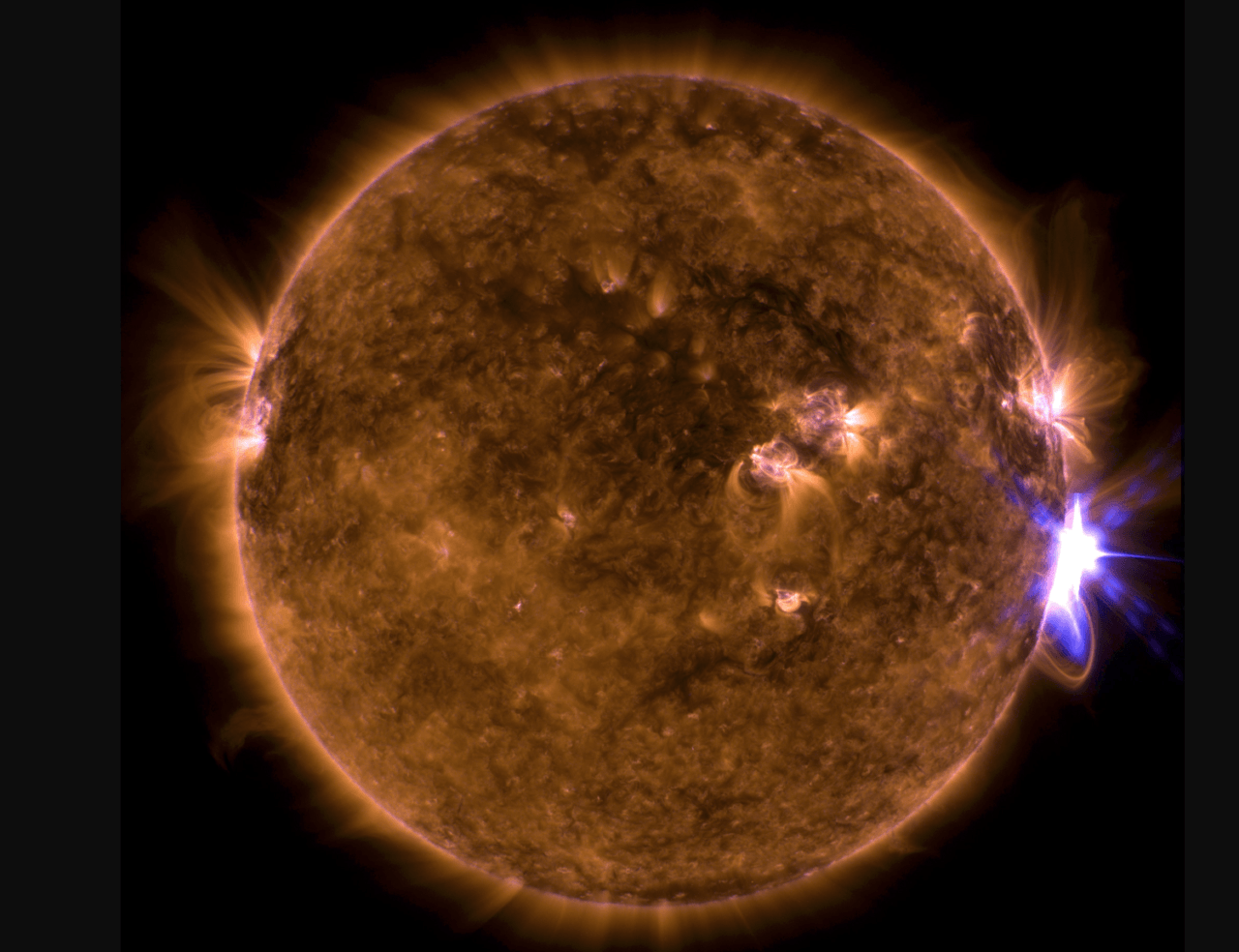Almost everyone loves a warm, sunny summer’s day.
But our Sun — about 93 million miles away, on average — also poses an enormous potential threat to the Earth.
“Although rare, an extreme coronal mass ejection (CME) — a large burst of plasma sent out by the Sun — could cause a months-long blackout, harm satellites and cause billions in damage,” says Axios.
The Sun’s activity goes through an 11-year cycle; a new one begins in 2020. It’s forecast to be quieter than the one ending this year. But, says the website, “Even during relatively calm solar cycles, the Sun can assert itself in ways that could affect everything from GPS reliability to whether the lights stay on in your home.”

The constant stream of solar particles flowing outward in all directions causes what scientists call “space weather” — and it is so complex they are far from fully understanding it.
But there’s no doubt about what a major CME could do, because it’s happened before.
“Perhaps the most extreme example of a damaging solar storm occurred in 1859, when a huge CME hit Earth, lighting telegraph lines on fire and creating auroras that could be seen almost everywhere on the planet,” Axios says, adding that today such an event “would be far more costly and damaging.”
This is an obvious, existential threat to astronauts in space and robotic spacecraft alike, along with the numerous GPS satellites on which we’ve come to depend for navigation.
But life on the ground could be dramatically, and dangerously, affected as well. Infrastructure, including much of the world’s electrical grid, could be knocked out.
“Once a CME is detected by a fleet of satellites tracking the Sun, it takes anywhere from 18 hours to a couple of days for [it] to arrive in Earth’s part of space,” Axios says. But that’s unlikely to be long enough for utilities to protect all their vulnerable transformers.
The non-profit Foundation for Resilient Societies estimates it would cost at least $3 billion to shield just the U.S. electrical system, and urges “rigorous legislation and regulation to make the U.S. more resilient.”



